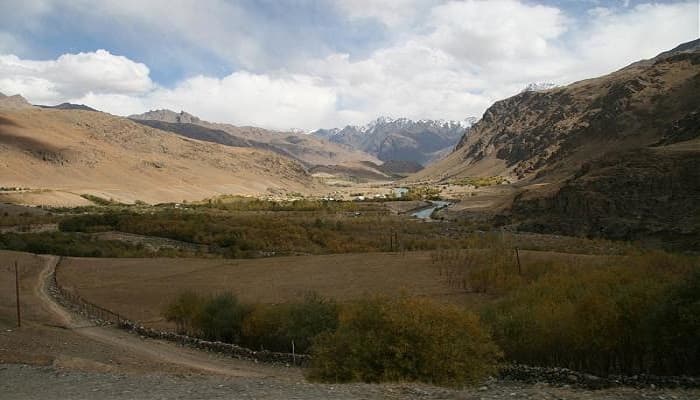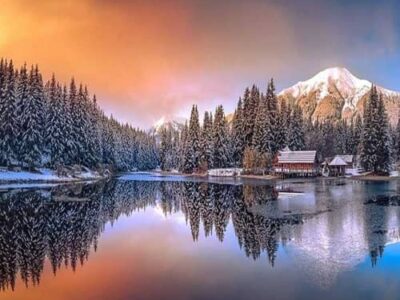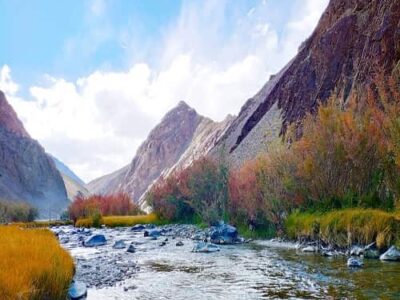The Drass Valley is located in the Indian state of Jammu and Kashmir. It is situated in the western Himalayas and is bordered by Pakistan to the west, China to the north, and India to the east. The valley is home to the Kargil district, which is the second largest district in the state.
The Drass Valley has a long and rich history. It was once part of the Tibetan Empire and later became a part of the Kashmir Kingdom. The valley was also a part of the Afghan Durrani Empire and the Sikh Empire. After the British took control of the region in the 19th century, the Drass Valley became a part of the princely state of Jammu and Kashmir.
The Drass Valley is best known for being the site of the 1999 Kargil War between India and Pakistan. The war was fought over the control of the Kargil district, which is located in the valley. India regained control of the district after a three-month long conflict.
Today, the Drass Valley is a popular tourist destination. It is home to some of the highest mountain peaks in the world, including the K2, which is the second highest mountain in the world. The valley also has a number of glaciers, lakes, and rivers.
2. The Geography of the Drass Valley
Situated at an altitude of 3,350 m, the Drass Valley is the second coldest inhabited place in the world. The valley is situated in the Kargil district of Jammu and Kashmir and is about 60 km from the Line of Control.
The Drass Valley gets its name from the Drass River which flows through the valley. The Drass River is a tributary of the Indus River and originates from the Kargil Glacier. The Drass Valley is home to the Kargil War Memorial which was built in the memory of the soldiers who lost their lives during the Kargil War.
The Drass Valley is situated in a high altitude cold desert and has a continental type of climate. The valley experiences very cold winters with temperatures dipping as low as -60°C. The summers are also very cool with temperatures not exceeding 15°C. The valley receives very little rainfall and is one of the driest places in India.
The Drass Valley is home to a number of glaciers such as the Kargil Glacier, the Sirijunga Glacier and the Drass Glacier. The valley is also home to a number of lakes such as the Tso Kar Lake and the Tso Moriri Lake.
The Drass Valley is an important strategic location for the Indian armed forces. The valley provides the shortest route from India to Siachen Glacier, the world’s highest battlefield. The valley is also home to a number of military installations such as the Kargil War Memorial, the Drass War Memorial and the Kargil War Museum.
3. The People of the Drass Valley
The Drass Valley is located in the Indian administrated state of Jammu and Kashmir. It is situated in the western Himalayas and forms a part of the Ladakh region. The valley is bounded by the Suru River in the north and the Dras River in the south. It is one of the coldest inhabited places in the world with a mean annual temperature of -10°C.
The valley is home to a small population of around 30,000 people. The majority of the people are Muslims and belong to the Sunni sect. There are also a small number of Buddhists and Hindus. The people of the valley are mainly engaged in agriculture and livestock rearing. They also trade with neighbouring regions and countries for their livelihood.
The people of the Drass Valley are known for their simple and hardworking nature. They are also very hospitable and welcoming towards tourists and strangers. The valley is a popular tourist destination and is visited by a large number of people from all over the world.
4. The Culture of the Drass Valley
The Drass Valley is a beautiful and secluded valley located in the Indian state of Jammu and Kashmir. The valley is home to a number of small villages, and is a popular tourist destination due to its scenic beauty and cultural heritage.
The people of the Drass Valley are predominantly Muslim, and the valley has a rich Islamic history. The first Muslim settlement in the valley is thought to have been established in the 14th century, and the valley has since been an important center of Islamic learning. Today, the valley is home to a number of mosques and madrassas, and is a popular destination for pilgrims from all over the world.
The Drass Valley is also home to a number of Hindu temples and shrines, and the valley has a long history of religious tolerance. Hindus and Muslims have lived side by side in the valley for centuries, and the valley is a popular destination for Hindus and Muslims alike.
The Drass Valley is a beautiful and secluded valley located in the Indian state of Jammu and Kashmir. The valley is home to a number of small villages, and is a popular tourist destination due to its scenic beauty and cultural heritage.
The people of the Drass Valley are predominantly Muslim, and the valley has a rich Islamic history. The first Muslim settlement in the valley is thought to have been established in the 14th century, and the valley has since been an important center of Islamic learning. Today, the valley is home to a number of mosques and madrassas, and is a popular destination for pilgrims from all over the world.
The Drass Valley is also home to a number of Hindu temples and shrines, and the valley has a long history of religious tolerance. Hindus and Muslims have lived side by side in the valley for centuries, and the valley is a popular destination for Hindus and Muslims alike.
The Drass Valley is a beautiful and secluded valley located in the Indian state of Jammu and Kashmir. The valley is home to a number of small villages, and is a popular tourist destination due to its scenic beauty and cultural heritage.
The people of the Drass Valley are predominantly Muslim, and the valley has a rich
5. The Economy of the Drass Valley
The Drass Valley is located in the Indian administered union territory of Ladakh. The valley is situated in the northwestern part of the country in the eastern Karakoram mountain range. The Drass Valley is bounded by the Suru River to the north and the Drass River to the south. The valley is about 60 kilometers long and 15 kilometers wide. It is one of the coldest inhabited places in the world with an average temperature of -15 degrees Celsius.
The valley is home to the Kargil War Memorial which was built by the Indian Army to commemorate the soldiers who lost their lives during the Kargil War. The memorial is situated on the Drass-Kargil Road and is open to the public.
The economy of the Drass Valley is largely dependent on agriculture and livestock. The valley has a number of villages which are engaged in these activities. The main crops grown in the valley are wheat, barley, peas, and lentils. The valley also has a number of apple and apricot trees. The livestock raised in the valley include sheep, goats, and yaks.
The Drass Valley is also home to a number of small businesses. These businesses include hotels, restaurants, and shops. The valley is a popular tourist destination and the businesses cater to the needs of the tourists.
The Drass Valley has a number of schools and colleges. The schools in the valley are run by the government and the colleges are privately owned. The schools in the valley offer education up to the 12th grade. The colleges in the valley offer undergraduate and postgraduate courses.
The Drass Valley is connected to the rest of the country by the Drass-Kargil Road. The road is the only link between the valley and the outside world. The road is open only for a few months in a year due to the heavy snowfall in the region.
 6. The Future of the Drass Valley
6. The Future of the Drass Valley
The Drass Valley is located in the Indian state of Jammu and Kashmir. It is situated in the western Himalayan Mountains. The valley is drained by the Drass River and its tributaries. The valley is about 60 km long and 10 km wide. It is bounded by the Suru River in the north and the Zanskar Range in the south.
The Drass Valley has a temperate climate. The temperature in the valley ranges from -4°C to 20°C. The valley receives heavy rainfall during the monsoon season.
The valley is home to a number of flora and fauna. The fauna includes ibex, markhor, snow leopard, red fox, musk deer, brown bear, Himalayan thar, and bharal. The valley is also home to a number of bird species such as the golden eagle, bearded vulture, and chukar partridge.
The Drass Valley is a popular tourist destination. The valley is known for its picturesque scenery and snow-capped mountains. It is also home to a number of trekking routes.
The future of the Drass Valley is uncertain. The valley is threatened by a number of factors such as climate change, deforestation, overgrazing, and landslides. These factors are likely to have a negative impact on the valley’s ecosystem.
Drass Valley FAQ
Q – Which is the best time to Visit Drass Valley?
If you want to visit Drass and or want to book Ladakh Tour so you should know the best time o visit Drass is an allover travel destination which means you can come any time and explore the Ladakh tourism
Summer ( April till August)
Yes if you like o come in the Summer book your Ladakh Trip in the month of May till August is the best time to explore valleys and much more
Q – How can we reach Drass?
you want to come to Ladakh valley but you don’t have any idea so there are two ways to come or reach by air also by train road
By Air to Leh: Yes is the best way to come toLeh by air from your city which means you can book a flight to Lehcheck and get cab Leh to Drass our Srinagar Tour Packages for more information
By Road from Srinagar. if you are looking for a cheap trip so you can come by train to Srinagar and in Srinagarget a local cab to Srinagar check our Jammu Kashmir Packages for more information

 6. The Future of the Drass Valley
6. The Future of the Drass Valley


